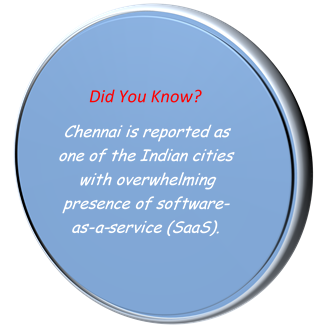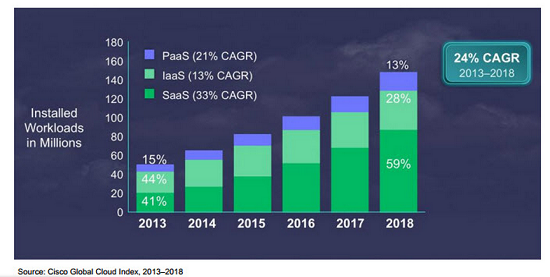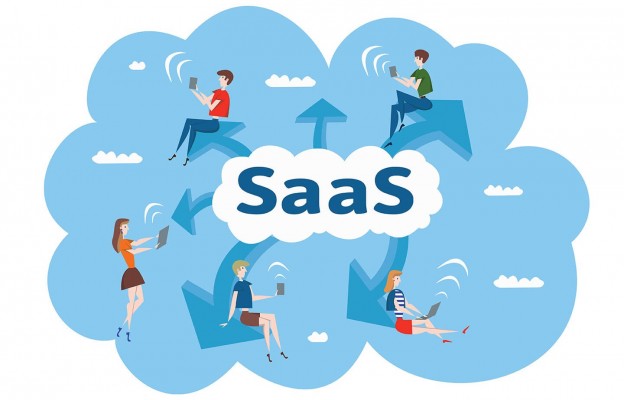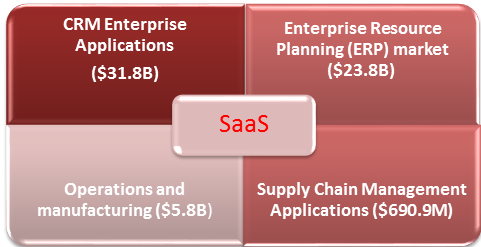Software-as- a- service (SaaS) delivery model is changing the way organizations and individuals utilize software owing to its cutting-edge attributes. It provides seamless software utilities, intuitive interface to customize, and automatic upgrades to ascertain all customizations applied, remain intact. Simply put, SaaS based applications are staggeringly scalable, and are available on an on-demand basis that doesn’t implicate hefty capital expenditure or long-term contracts.
 Traditionally, organizations needed to install and configure licensed software, like CRM, MIS, CM, &ERP on individual user systems or on their servers, which is undeniably a complicated, expensive, and time-consuming practice. The emergence of cloud computing has helped in connecting the dots by facilitating clients to gain access to comprehensive suite of software applications from anywhere (over the Internet) in a cost-effective and scalable manner. Today, businesses of all sizes (SMBs, SOHOs, and Enterprises) are subscribing SaaS apps to augment ROI, and optimize their IT landscape.
Traditionally, organizations needed to install and configure licensed software, like CRM, MIS, CM, &ERP on individual user systems or on their servers, which is undeniably a complicated, expensive, and time-consuming practice. The emergence of cloud computing has helped in connecting the dots by facilitating clients to gain access to comprehensive suite of software applications from anywhere (over the Internet) in a cost-effective and scalable manner. Today, businesses of all sizes (SMBs, SOHOs, and Enterprises) are subscribing SaaS apps to augment ROI, and optimize their IT landscape.
SaaS: A Brief Overview
SaaS applications are typically based on subscription models, wherein users pay a fixed amount (on a recurring basis) over a period of time, and can discontinue the service as required. On the contrary, traditional software model involves large upfront payments to procure and manage. Users need to pay expensive licensing fees before they get started.
It is challenging to forecast the exact business growth and buy same set of applications that can accommodate the escalating growth. If the growth is beyond what have been forecasted, there may be not enough resources to respond to the need. If less growth, you will witness high operating cost and low asset utilization. SaaS allow companies and individuals to only pay for the resources when needed.
SaaS enables Independent Software Vendors (ISV) to provide their tools and other significant engineering resources that can help them create killer apps, entailing greater innovation and strengthening presence. On the top of it, it helps in reducing the time required to update, and supports multiple platform configuration, which is a quite intricate task with traditional software options. Here, SaaS allows ISVs to concentrate on one holistic platform.
Read More at : How SaaS Providers Can Reduce Customer Attrition
SaaS allows ISVs to quickly procure hardware, operating system licenses, and other required software applications followed by installation in minutes. It reduces the deployment cycles and deliver software on-demand basis. Also, it allows users to stay away from the hassle of upgradation, installation, and configuration, using the latest version of the software, all the time. This in turn, augments user satisfaction and slashes legacy support costs.
![]()

Above graph forecasts that by 2018, SaaS workloads will count for approximately 59% of overall cloud workloads, which is 41% up from 2013.
SaaS Brings Challenges As Well
There is no denying the fact that SaaS offers a host of benefits by responding to the needs of multiple clients from a single software instance, however, the accelerated adoption rate has also raised security concerns about the SaaS based solutions. Among all, data breach and control to handle the software utilities are the two major issues allied with this cloud delivery model. To combat such performance-ditching scenarios, technology pundits have suggested immaculate ways:
- Improve the protection level by implementing two-factor authentication just like Gmail and other banking sites
- Backup all your mission-critical data, and select a provider with technically-sound infrastructure and other requisite provisioning.
The Bottom Line: Software as a service has a bright future and the businesses leveraging the SaaS based model with adequate security considerations in mind – will innovate quickly without bearing hefty capital investment.
Read More at : Add Value to Your Business through Software-as-a-Service (SaaS)






 Live Chat
Live Chat

